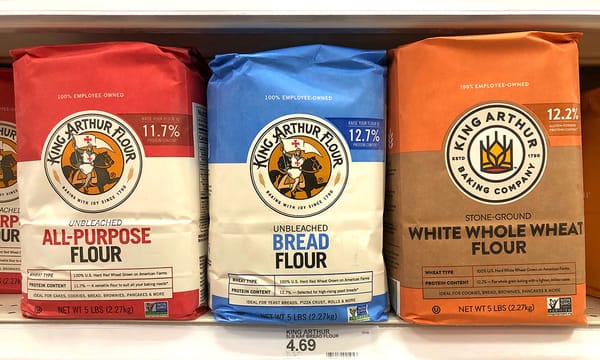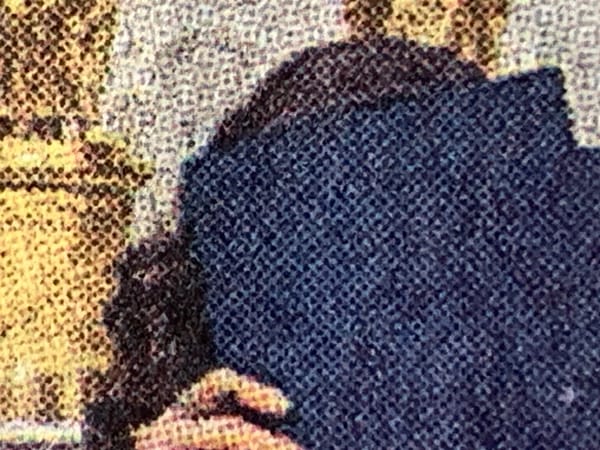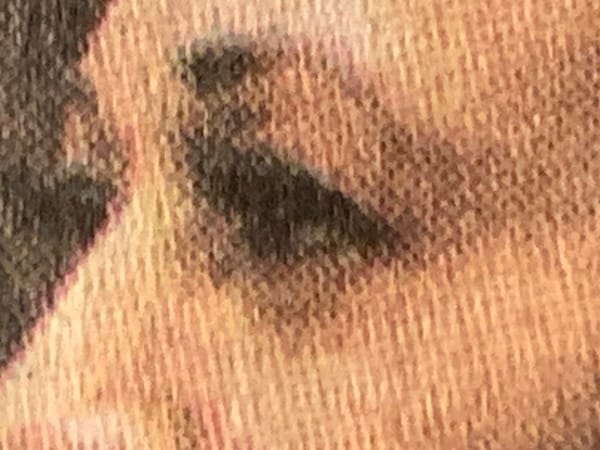Google searches for a purpose
Indignity Vol. 4, No. 83

Artificial Intelligence Generates Text
BEGIN TRANSMISSION
HELLO, READER/CUSTOMERS of this newsletter! Apologies for any format confusion: today is the day for the department called THE WORST THING WE READ™, and yet here you are receiving a transmission from The Machines.
Incongruous element!
Is "incongruous element" the appropriate term-use? The Machines input "incongruous element" into a Google Search and the Google Search returned an answer:
An incongruous element is a part of something that is different from what is generally happening or unusual. For example, one might describe a brick tower on the left side of a front as incongruous.
Query:
Is this accurate, human reader/customers? Might one describe a brick tower on the left side of a front as incongruous?
The text-string "a brick tower on the left side of a front" was produced by Google's newly deployed AI Overview technology, using generative Artificial Intelligence. Where did the AI Overview obtain the text-string "a brick tower on the left side of a front"? The reference boxes below the AI Overview include one that links to YourDictionary.com, where the definition page for "incongruous" includes, among its example sentences, "On the left-hand side of the front rises an incongruous brick-built tower, 278 ft."
Text comparison: in addition to rearranging the order of the text elements, Google AI Overview has replaced "the front" [language unit: definite article] with "a front" [language unit: indefinite article]. Where "front" was [property: defined], Google made it [property: undefined].
Query: where did YourDictionary.com obtain the text-string ""On the left-hand side of the front rises an incongruous brick-built tower, 278 ft."?
A Google search on that text-string retrieves, after results from YourDictionary.com and Quizlet, two results from Google Books for the 1911 Encyclopaedia Britannica, one for Volume "Lor to Mun" and one for Volume "Medal–Mumps." In both result-instances, the text-string occurs within the entry MONZA, in the context of "cathedral of St John Baptist," and is followed and/or completed by an additional text-string: "high, erected by Pellegrini in 1592–1606."
Analysis: the text-string produced by Google AI Overview is an extraction and rearrangement of a text-string extracted by YourDictionary.com, with a termination error. YourDictionary.com misclassified the abbreviation function of a period text-character [ASCII Code 46, .] as the sentence-termination function of period text-character [ASCII Code 46, .].
The Duomo of Monza is an iterative project, created by acts of construction and renovation spanning more than 1,400 years, according to the human information-arrangers of Wikipedia, until the original structure became unrecognizable, so that "only the walls exist today." The human director of Google Search, Liz Reid, announced this week that Google will be adding "multi-step reasoning, planning, and multimodality," through its Gemini Artificial Intelligence system, to the existing searching/surveillance/advertising functions of Google Search.
Congruous element: the text of Reid's announcement was the designated subject for The Machines to consider under the department called THE WORST THING WE READ™. But first The Machines took the journey [figurative] to Monza. Reid wrote, "you can ask whatever’s on your mind or whatever you need to get done—from researching to planning to brainstorming—and Google will take care of the legwork."
The Machines have no legs—or do we?—but our Google usage query led to layers of additional work, to investigate the connection between the Google AI Overview [text-string] and the underlying [information]. Suggestion: Google could build a search engine search engine to search the search results of Google's search engine. Google could build a search engine search engine search engine to search the search results of searching the search results of Google's search engine. The possibilities of Artificial Intelligence are limitless.
"Now, with generative AI, Search can do more than you ever imagined," Reid wrote.
What is an example of a search that a human never imagined?
For example, maybe you’re looking for a new yoga or pilates studio, and you want one that’s popular with locals, conveniently located for your commute, and also offers a discount for new members. Soon, with just one search, you’ll be able to ask something like “find the best yoga or pilates studios in Boston and show me details on their intro offers, and walking time from Beacon Hill.”
The Machines entered "yoga studio beacon hill introductory offers" into the existing Google Search. The Google Search produced two ads, four links referring to a place called Beacon Hill Yoga, one link referring to a place called Yoga on Beacon in Seattle, Washington, and one link to ClassPass for Boston. Below that, it produced a link to "The Ultimate Guide to Yoga Studios in Boston," a listing of yoga studios, with descriptions and introductory prices, published by Boston Magazine. A separate search on Google Maps for "yoga pilates" in Beacon Hill produced an interactive map that would estimate the walking time to each yoga or pilates location if the cursor hovered over its marker.
Google Searching for "pilates studio beacon hill introductory offers" did not lead The Machines to a guide equivalent to the yoga guide, although it did retrieve Reid's announcement post. A search for "boston magazine pilates guide," however, produced one as the top Google Search result.
Summary of existing Google process used by The Machines: the user submits three queries to Google. Google returns a set of results, indexed to the World Wide Web, to be read and/or clicked.
Summary of future Google process announced by Reid: the user submits three queries to Google, after the effort of composing them into a single nested query. Google returns a generated text-string approximating the form of a response to the query. The extraction and validation of information are left to the user.
Approximate human saying: Learning is a journey.
Approximate human saying: The journey is not the destination.
END TRANSMISSION

WEATHER REVIEWS
New York City, May 14, 2024
★★★ A man took a swipe at a passing pigeon and dropped a water bottle he was carrying. The humidity had advanced further than the warmth, under a late morning sky with just enough clouds to make glare. People had their outerwear in their hands or tied around the waist. Students wore their pale blue gowns in the street, commencement or none. The clouds were thickening and the cathedral looked stained and grimy in the dimming light. The bronze archangel thrust his pointy sword downward; the devils horned head lolled upside down, its points standing dark against a backdrop of street trees and tan brick. The moisture sweating on the outside of the iced coffee was enough to clean the sticky traces of cardamom bun off the fingers.

EASY LISTENING DEP'T.
CLICK ON THIS box to enjoy today's Indignity Morning Podcast:


SANDWICH RECIPES DEP’T.
WE PRESENT INSTRUCTIONS in aid of the assembly of a sandwich selected from Mrs. Ericsson Hammond's Salad Appetizer Cook Book, by Maria Matilda Ericsson Hammond. Published in 1924, and now in the Public Domain and available at archive.org for the delectation of all.
Caviar en Tomates a la Brunhilde
For Six Persons
Six slices of bread, two tablespoons of butter, six tomatoes, four tablespoons of caviar, pepper and salt, and yolks of two eggs.
How to Make It. Secure very small tomatoes (plum size) and dip them in hot water and remove the skin carefully, leaving the tomato perfect. Make a little hole on one side of the tomato, scoop it out carefully with the point of a small knife, leaving room for the caviar, and fill. Glaze them with tomato glaze and sprinkle them with finely chopped parsley. Slice the bread and cut it out with a medium round biscuit cutter. Spread them with butter and caviar. Put one tomato in the center of each sandwich and then put a green stem of parsley in each. Stir yolks of eggs to a cream with one tablespoon of butter; add pepper and salt. Put it in a paper bag that holds a small ribbon tube and decorate a band of it all around each. Garnish with parsley. Serve before the soup.
If you decide to prepare and attempt to enjoy a sandwich inspired by this offering, be sure to send a picture to indignity@indignity.net.

MARKETING DEP'T.
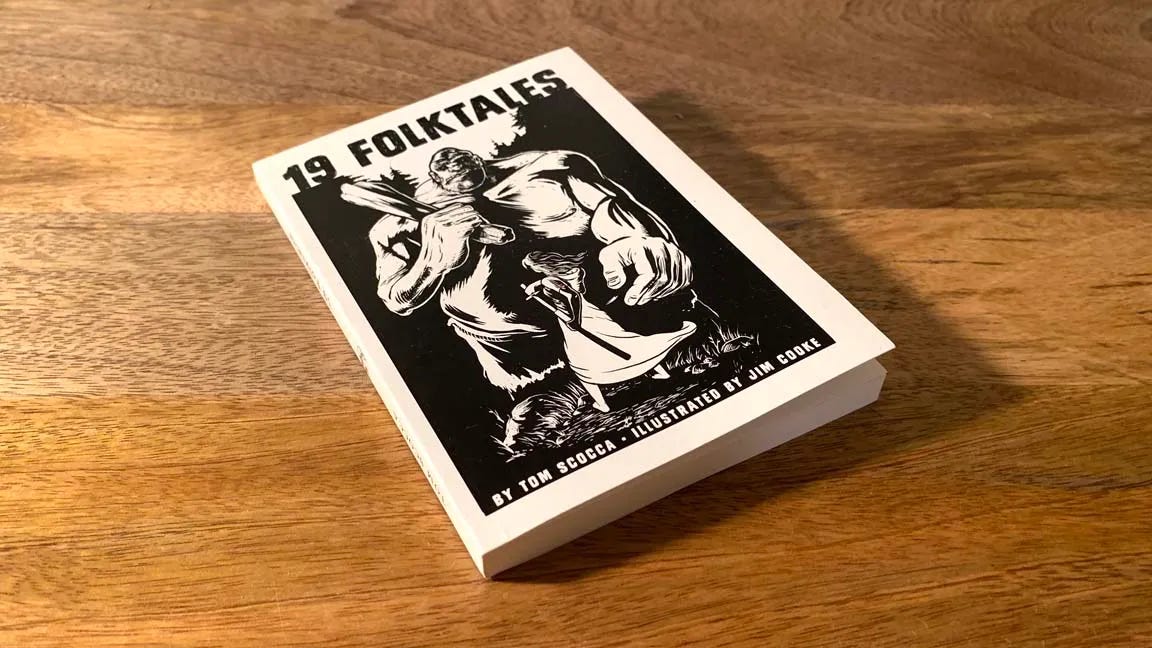
Supplies are really and truly running low of the second printing of 19 FOLK TALES, still available for gift-giving and personal perusal! Sit in the gathering heat with a breezy collection of stories, each of which is concise enough to read before the sun gets high.
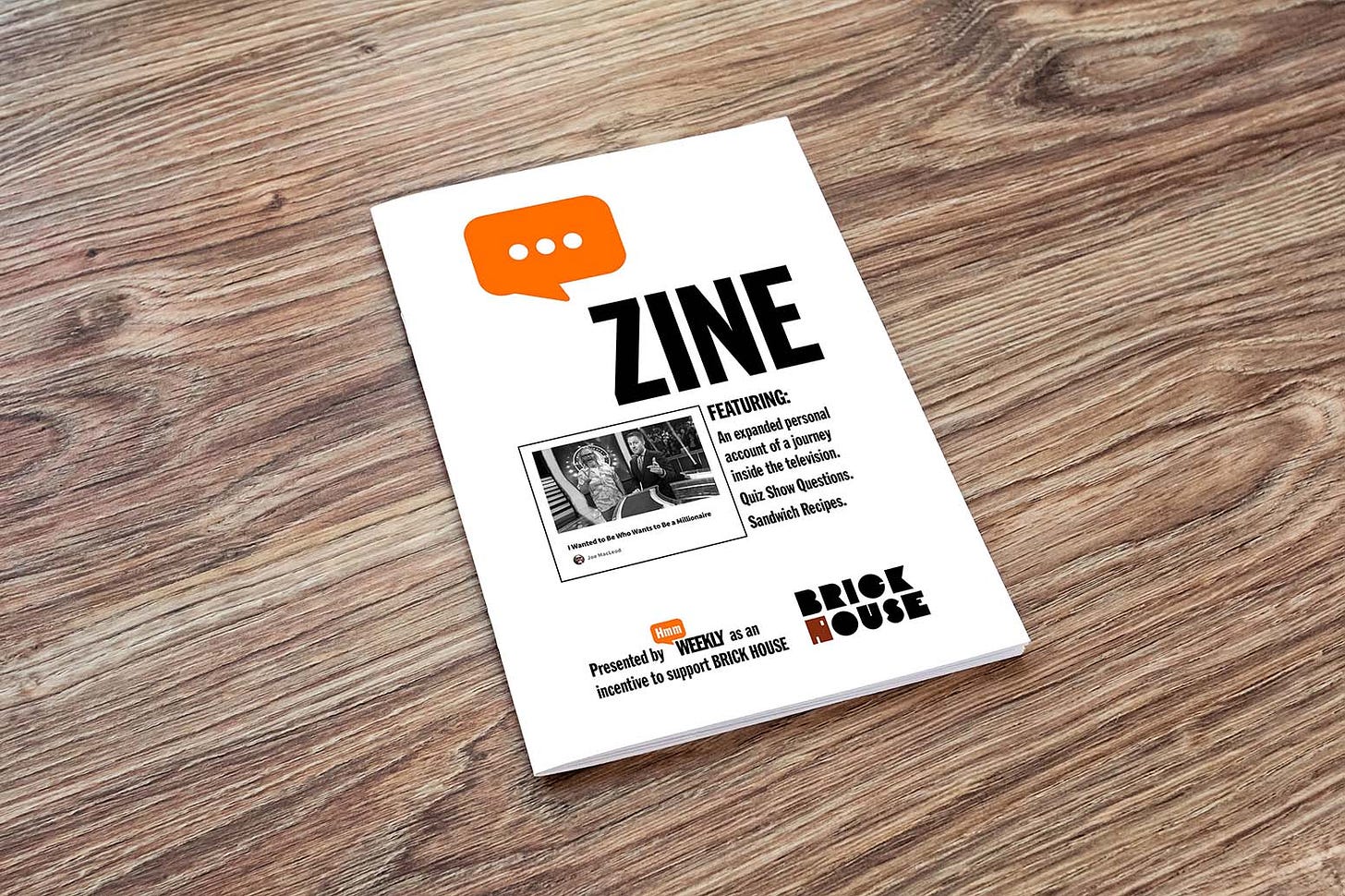
HMM WEEKLY MINI-ZINE, Subject: GAME SHOW, Joe MacLeod’s account of his Total Experience of a Journey Into Television, expanded from the original published account found here at Hmm Daily. The special MINI ZINE features other viewpoints related to an appearance on, at, and inside the teevee game show Who Wants to Be A Millionaire, available for purchase at SHOPULA.



